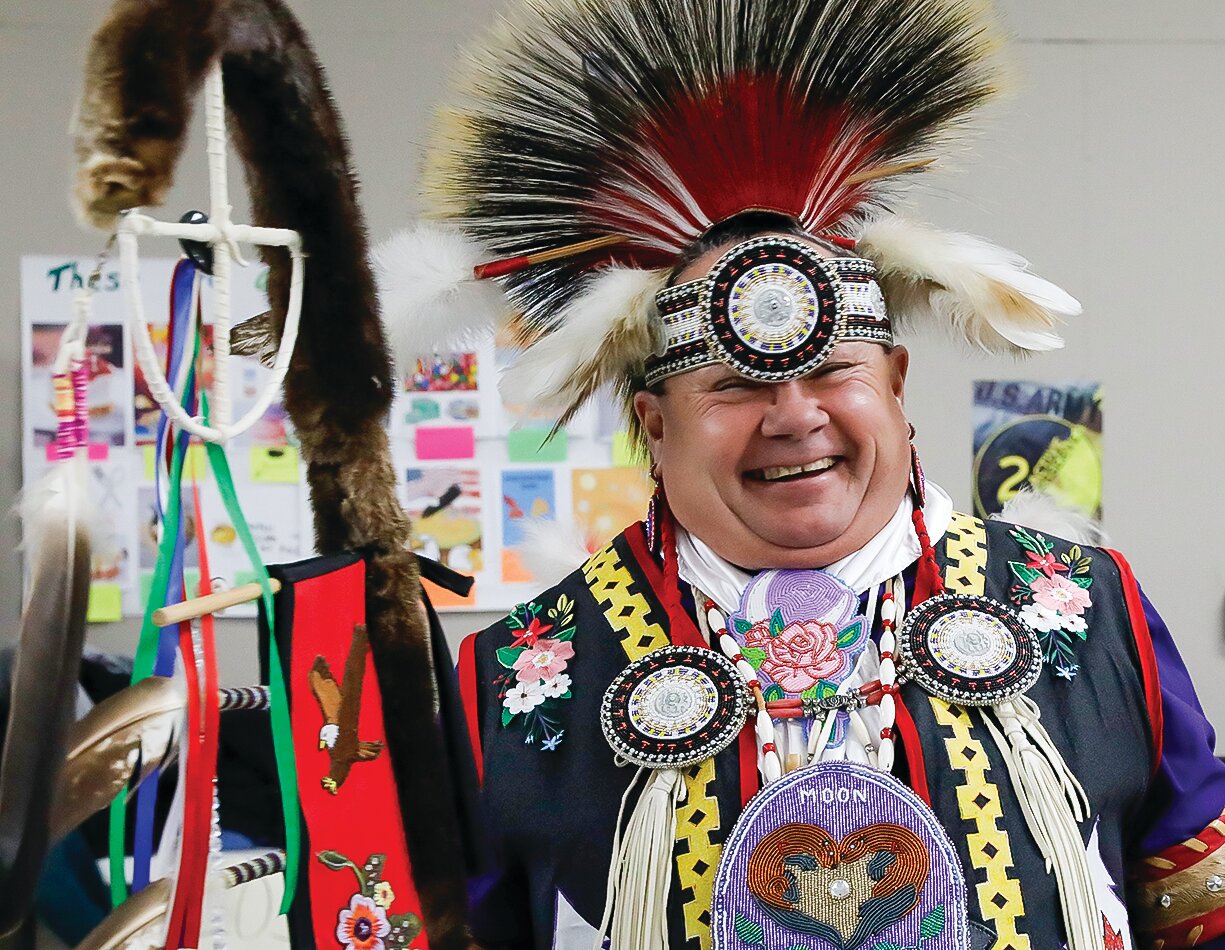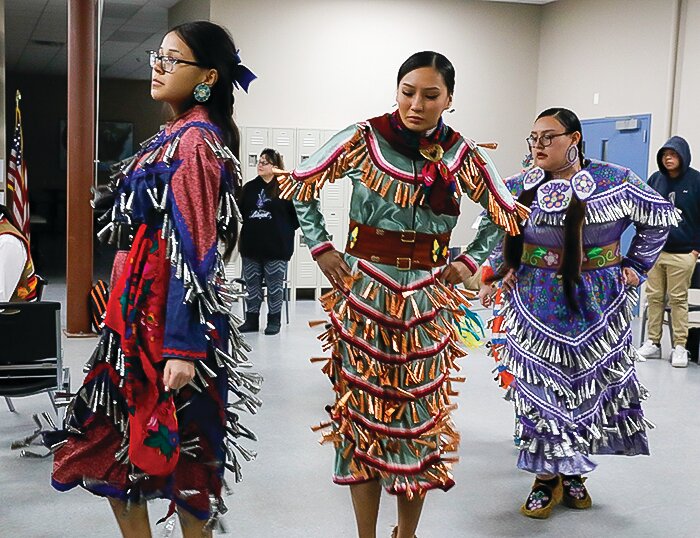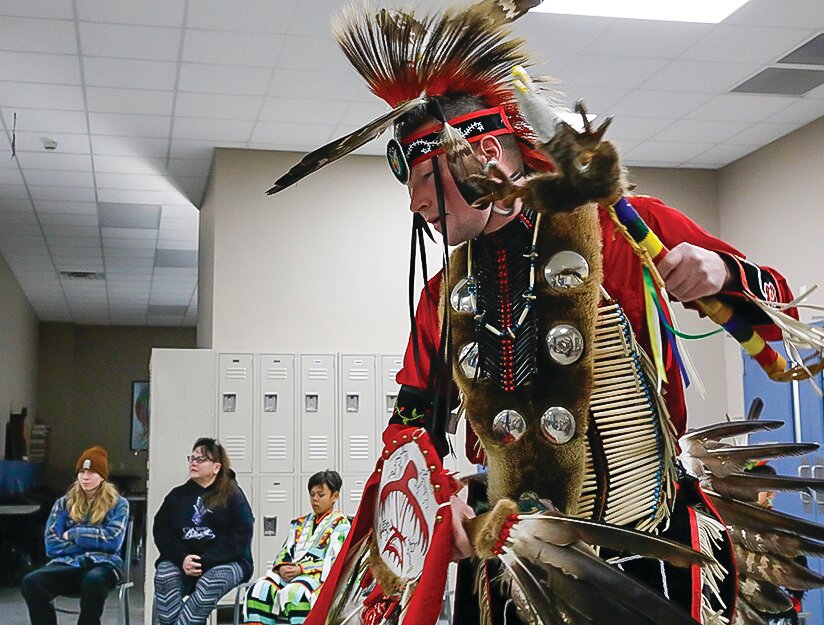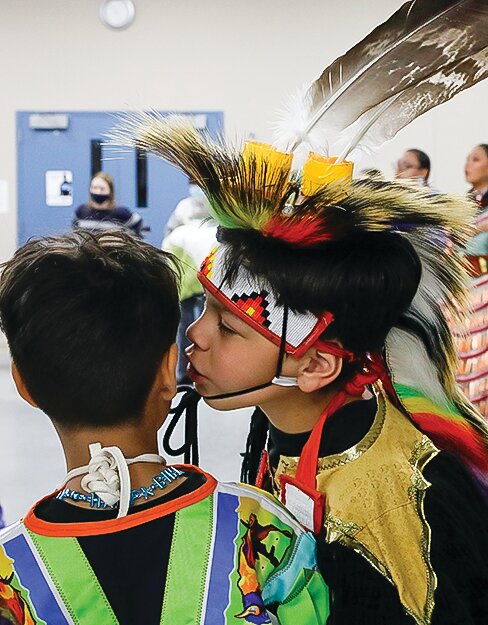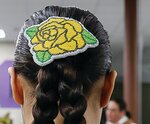Support the Timberjay by making a donation.
Learning the powwow way
VCS program highlights the history, styles, and importance of powwow
TOWER- Curt Moon, a veteran and elder, led the dancers into the makeshift arena in the commons area at Vermilion Country School. The Lake Vermilion Singers drum group was seate d at the center. A …
This item is available in full to subscribers.
Attention subscribers
To continue reading, you will need to either log in to your subscriber account, below, or purchase a new subscription.
Please log in to continue |
Learning the powwow way
VCS program highlights the history, styles, and importance of powwow
TOWER- Curt Moon, a veteran and elder, led the dancers into the makeshift arena in the commons area at Vermilion Country School. The Lake Vermilion Singers drum group was seate d at the center. A ring of chairs enclosed the space, with students and staff from the school respectfully standing. The dancers moved clockwise around the circle, like the sun moving from sunrise to sunset. Holding his staff lined with eagle feathers, he led almost 20 dancers as they moved around the drum circle.
“We stand during the grand entry song to acknowledge all the good things that are going to happen here,” said Jeremy Wilson, a member of the drum group. Wilson explained that coming to Tower was a bit of a homecoming for him, having spent a year or two at Tower-Soudan High School and playing basketball as a Golden Eagle. Wilson, who lives in Duluth and is an instructor at Fond du Lac Community College in Cloquet, helped lead this educational cultural event, which was organized by VCS staffer Adrienne Whiteman. These powwows have become almost an annual event, and often feature visits from former VCS students.
Students learned about the history of powwows, which first became popular in the 20th century, though the ceremonial aspects of powwows trace back far longer. Such gatherings were banned, both in the United States and Canada, in the 19th and early 20th centuries.
“It is an honor to be here and pass these traditions forward,” said Wilson. “We are bringing our culture into the future.”
Wilson said the powwow tradition ignited his own passion for his culture, as well as for many others. He was taught to drum and sing by Carmen Two Crow, from Traverse City, Mich.
“Being a singer kept us out of trouble. It was a good way to socialize,” he said. “You learned to take care of your drum. And that your drum will take care of you.”
As a member of the Lake Vermilion Singers, who all have ties to Bois Forte, he has traveled all across the country. The songs they sing were here before this school was built, and even before this town was built, he said.
“Each drum has a spirit,” Wilson said. “I sing for my drum and my group. I do not sing for myself. We are there for each other.”
Several of the dancers spoke about their regalia, their outfits, how they were chosen, and what they represented.
Moon, who is Oneida and Iroquois, ended up in northern Minnesota after marrying his wife, who hailed from the area north of International Falls.
“I’ve danced the Men’s Traditional style for over 40 years,” he told the students. He explained how he would receive new pieces of regalia as gifts when he attended powwows.
“I kept updating outfits,” he said. “Men’s Traditional dancers tell stories when we are dancing. Our outfits tell stories about ourselves.” His outfit is in the Woodland Style.
Moon’s outfit includes a representation of a large white pine, a “tree of peace,” where his ancestors buried their weapons being used for fighting other tribes. His eagle feathers all represent prayers, and other designs represent the circles of life.
“There are about 50,000 dancers in this country,” he said, “and no two outfits are the same.”
The bells on his outfit have two purposes, he said. Realistically, he said, they help a dancer keep time with the drum. But spiritually, their ringing sound keeps bad things away from the dance grounds. Moon talked about the significance of his head piece, with porcupine quills standing tall. When a porcupine senses danger they puff up their quills, they are on alert, Moon said. The head piece is making sure everyone is safe in this circle.
Beadwork came to the Americas from France, Moon said, but “we perfected it.”
Chaz Wagner, who grew up in Nett Lake, said his mother gave him his outfit when he was a toddler and attended his first powwow.
“I grew up in a family of dancers,” he said. “I dance to honor my people.” A member of the Eagle Clan, Wagner dances with a staff decorated with eagle claws. His native name means Golden Eagle. His dancing outfit features Ojibwe floral patterns.
“My outfit chose me,” he said.
Jordan Gawboy dances mostly in the Woodland Style, but enjoys dancing other styles as well. The Woodland Style has been “coming back,” he said. He dances with a bandolier bag decorated with floral beadwork and is known for his detailed beading.
Several elementary-aged dancers attended the powwow. Skyler Stillday explained he danced to honor his grandparents, who couldn’t dance anymore.
Wilson explained that families do not force their children to dance, but that children need to choose this.
“It takes a lot of practice,” he said.
Aleeziah Stillday talked about her jingle dress. She is a Princess from the Cloquet High School.
“This is a healing dress,” she said. “It chose me. It always felt right to me.” As royalty, part of her responsibility is to travel to other powwows. “It’s an honor,” she said.
Another dancer, Molly Hunter is a senior princess representing Fond Du Lac. She said she especially likes side step songs which are fun to sing and fun to dance to.
Wilson explained each style of dance, and those dancers took turns showing off their steps.
At the end of the presentations, school students and staff joined and danced during an Intertribal song.
The powwow ended with a traditional traveling song. Afterwards the drummers and dancers joined the students for lunch at the school.

